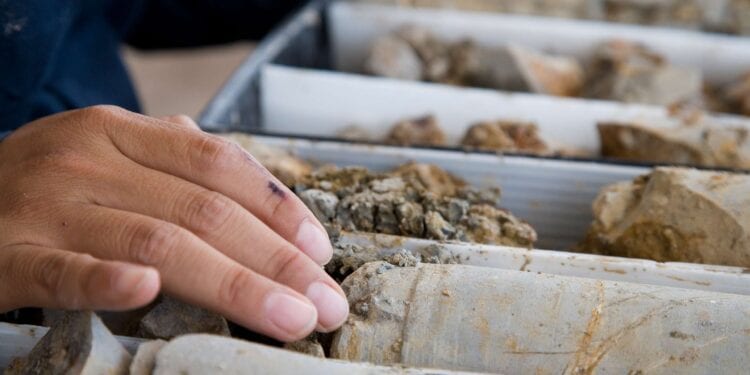Doubles Ground Position In Germany
Excellon Resources Inc. (TSX:EXN) has significantly expanded its Silver City Project in Saxony, Germany.
The Project has been more than doubled to 34,150 hectares with the addition of the Frauenstein Mohorn and Oederan exploration licenses
The areas have historical records high-grade silver production to shallow depths, with recent confirmation samples assaying multi-kilo silver and significant gold,
SVP Geology and Corporate Development, Ben Pullinger, said Excellon continues to be a first mover on silver exploration in Saxony, with an unparalleled ground position covering historical high-grade silver mines on an epithermal silver belt that has never seen modern exploration for precious metals
“Over the past year, Saxony has become an important jurisdiction for Excellon,” Mr Pullinger said.
“We permitted the first drilling programme for precious metals in modern times on the Bräunsdorf license, smoothly initiated the program, struck a major epithermal silver system over 12 kilometres, confirmed high-grade silver species and discovered high-grade silver veins.
“Based on our ongoing review of historical archives, we have added new licenses that cover additional areas of historical high-grade silver production with no modern exploration.”
The three exploration licenses added to the Silver City Project are as follows:
Frauenstein (5,700 hectares)
Silver mining in this area has been documented as early as the 13th century. Records indicate significant production of silver ranging from the early 1700s until closure in 1884. Operations seldom exceeded 50m below surface. Recent analysis conducted by the MSAG (Mineral Systems Analysis Group, TU Freiberg and Helmholtz Institute Freiberg) confirmed silver grades up to multiple kilograms per tonne and significant gold values.
Mohorn (5,700 hectares)
Production of silver on the Mohorn license dates back to the early 1700s with records indicating high grade silver production at up to 3,400 g/t Ag from 1770 to 1883, when the Erzengel Michael mine, the largest historical mine on the license, ceased production. Geophysical surveys conducted in the 1950s confirmed the continuity of these veins along strike and documented workings terminate at 150m below surface. Primary mining of lead and zinc continued until 1969 at Halsbrucke, with mining reaching up to 559 metres below surface and historical mineral reserves remaining at depth.
Oederan (6,300 hectares)
The Oederan license extends the Bräunsdorf trend southward and encompasses numerous poorly documented historical mines dating back to medieval times, the most significant of which was Hilfe Gottes, which ceased production in 1855.
The Silver City District was mined for high-grade silver from the 11th until the late 19th century, when Germany left the silver standard in 1873 and the gold:silver ratio collapsed. Records from the project indicate high-grade silver production over substantial widths throughout the district.
Excellon has embarked on the first modern day exploration programme focused on precious metals, with high-grade silver intersections from the initial holes of the first programme on the Bräunsdorf license including: 1,043 g/t silver equivalent (AgEq) over 1.3m (954 g/t Ag, 0.1 g/t Au, 0.7% Pb and 2.0% Zn) at Grauer Wolf; and 1,042 g/t AgEq over 0.45m (911 g/t Ag, 0.4 g/t Au, 2.8% Pb and 0.9% Zn) at Peter Vein.












